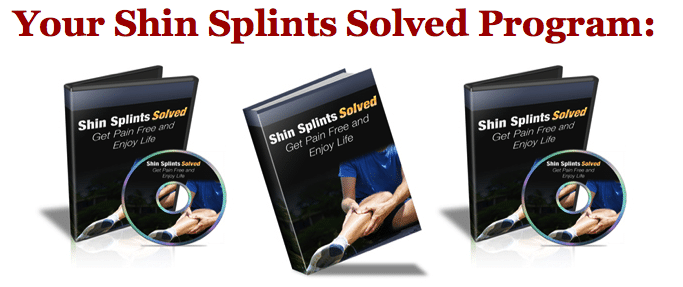
As you know, I just finished up the Injury of the Month, focusing on shin splint exercises. Creating the program was a lot of fun, and it is always great to look at what I do and what I have learned working with people with shin splints and compare this with the research. I wanted to highlight a few very cool things that I learned when it related to exercises for shin splints.
Before I get into the details, let’s start with a definition of shin splints.
What are Shin Splints?
“Medial tibial stress syndrome (MTSS) is an overuse injury or repetitive-stress injury of the shin area. Various stress reactions of the tibia and surrounding musculature occur when the body is unable to heal properly in response to repetitive muscle contractions and tibial strain.” – Galbraith 2009
There was a lot of reference to Medial Tibial Stress Syndrome (MTSS) in the research. Along with MTSS, 13 other names refer to shin splints. Now that is a little confusing. It would be nice if everyone stuck to one.
Now that we have the definition, I learned a few things about shin splints when digging into the research.
Orthotics Increases Your Risk of Getting Shin Splints
This was a bit of a shock. This statement took a little figuring out.
We all know that medications have side effects. Medication will solve one problem but often creates another. It looks like orthotics are the same. Using orthotics may solve one problem but increase your risk of shin splints.
Very interesting. Let me dig into things a little further. Athletes that use orthotics have a greater risk of getting shin splints (Hubbard 2009) if they are athletes or work with athletes, which is something to keep in mind.
Of military recruits, about 4% of them will get shin splints (Herring 2006). This is a lot of people that are injured. The military has spent a lot of money on research to find out what to do for new military recruits that enter basic training. The study recommended using a shock-absorbing insole to decrease the risk of shin splints.
Remember, if you are a runner, when your running shoes hit about 250 to 500 miles, the absorption of the boots has decreased by 40%. All of this makes sense looking at the definition above.
Summary
- A rigid orthotic increases the stress on the shin area, which increases the risk of shin splints.
- The substantial boots that military recruits are given and the surface they mainly walk on lead to increased stress on the shin area and a greater risk of shin splints.
- Lastly, looking at runners, as the mileage increases on their shoes, there is less shock absorption, leading to more stress and an increase in shin splints.
No Evidence for Shin Splint Stretching
I was surprised, but there was no evidence to support shin splint stretching or tibialis anterior stretching. Very interesting.
There was no evidence of the benefit of foam rolling the shins for shin splints. I did include them in the Shin Splints Solved program.
I put them in stage 1 of the program as I feel they are suitable for countering the tension in the tibialis anterior and helping with pain management.
Best Exercises
This was another surprise for me. The most common recommendations that people are given for shin splints are to stretch the shin, roll the shin and decrease training, but that is not a long-term solution.
It makes sense. If running hurts, doing some stretching will not lead to having your shin splints go away and get you back to running again.
Stretching and rolling will help with initial recovery and pain management but will not be the critical thing to get you back to running. If you search the internet for exercises for shin splints, you will see stretching and toe wiggling exercises are preferred. (Note – Just because it is the most popular recommendation does not mean it is suitable.)
In a 2008 study by Dr. Debbie Craig, she recommended: “increasing the strength and endurance of the soleus muscle.” This is hard to do with stretching, foam rolling, and toe-wiggling exercise. But you can do it with plyometrics.
Recommended Exercises for Shin Splints
- Doing stage 1 exercises that focus on recovery, pain management, and plyometric movements.
- It is moving onto stage 2 exercises which focus on strengthening the ankle, challenging the hip, and performing activities that prepare the body for plyometrics.
- The last stage (#3) is introducing plyometrics exercises.
There you go—a new exercise program for shin splints. I hope this benefits you as much as it did for me.
If you are interested in the Shin Splints Solved program, check it out here.
Just a reminder of what you get with the Shin Splints Solved program
In the Shin Splints Solved Program, you will get:
- A comprehensive video presentation gives you all you need to know about shin splints and tells you what to do to overcome them.
- A researched back exercise program with over 29 shin splint exercises with descriptions and photos.
- Then you will get videos of all of the exercises, which will show you how to do the exercise right so you can get maximal benefit from the program.
That is it, have a great day.
Rick Kaselj, MS
.



